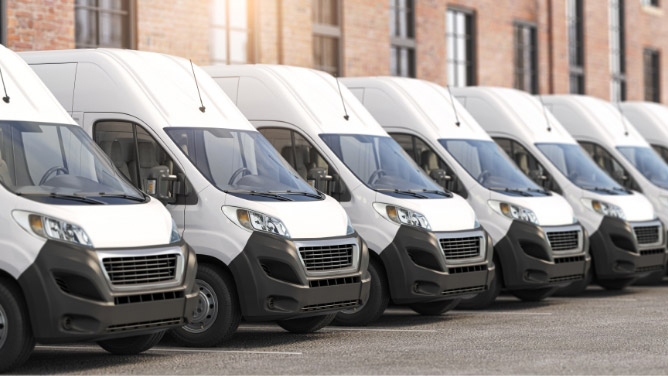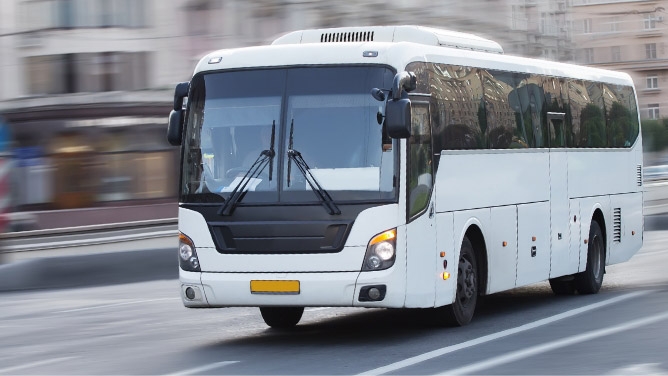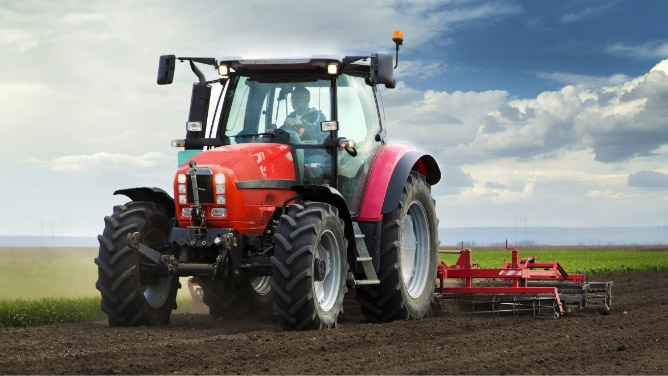Fleet telematics refers to the integration of telecommunications and informatics technologies to collect, transmit, and analyze data from multiple vehicles. This technology enables real-time tracking, performance monitoring, and data-driven insights that optimize fleet management, improve operational efficiency, and enhance safety.
While other fleets without a telematics system are forced into reactive choices if something goes wrong, fleets with telematics are able to better assess a need before it arises.
Telematics puts you in the operational driver's seat and enables more control over your fleet thanks to data-driven insights that lead to better decisions.
Read more to learn about what fleet telematics is and how a telematics system can make your fleet more profitable.
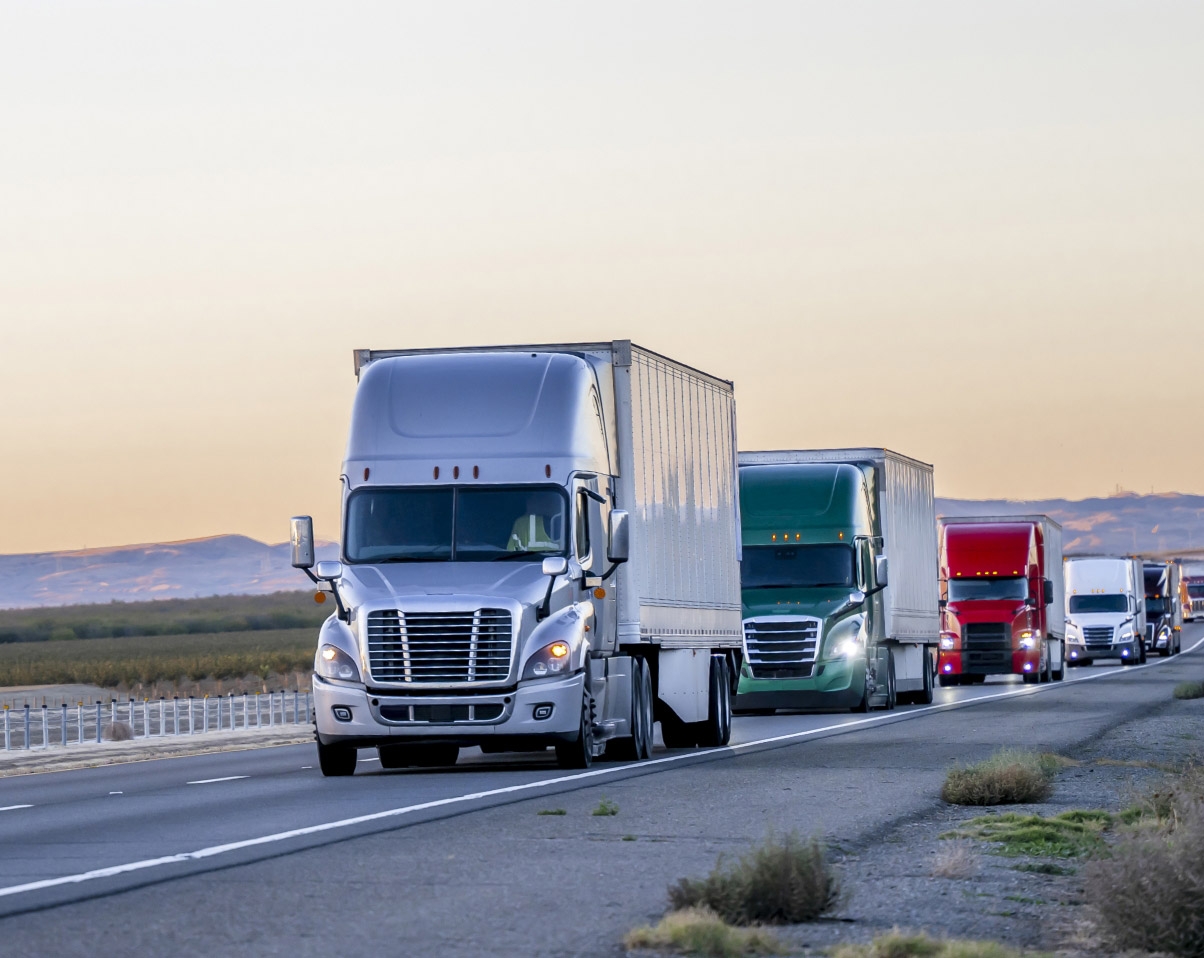
What Is Telematics?
Telematics is a revolutionary technology that combines telecommunications, informatics, and wireless devices to send, receive, and store data. Specifically, telematics is the transmission of data connected with vehicles that are part of a larger fleet.
While telematics can certainly be applied to a single car or truck, more often than not, telematics is used for managing multiple vehicles, or a fleet.
Sometimes referred to as "Fleet-Tracking" or "GPS Vehicle Tracking," fleet telematics is more than just tracking. "Fleet-Tracking" or "GPS Vehicle Tracking," don't necessarily address the depth of what telematics really is.
Want to know if a truck is idling too much and burning extra fuel as a result? That's a job for telematics. Curious about whether routes are being optimized for time in traffic? That's a job for telematics too!
Telematics is a monitoring method that relies on GPS, and other onboard monitoring systems, to transmit valuable vehicle data back to your hub. In addition to providing information about the vehicle, telematics can also offer valuable insights about the driver (and their habits) allowing you to better monitor your vehicles and the people who drive them.
From improving fuel efficiency to saving on maintenance costs because you know when a truck is due for a tune-up, this technology has revolutionized modern fleet management, and is now an essential management tool for any commercial fleet.

How Does Telematics Work?
Omnitracs Roadnet Telematics is built to inform you of costly and dangerous events called exceptions. These exceptions can be anything from harsh braking and rapid acceleration to idling and speeding.
In order to supply you with this data, Omnitracs Telematics uses a combination of GPS, and other telecommunications components, to transmit vehicle-specific data like location, fuel consumption, and vehicle speed.
Using a special sim card, and modem-based telecommunications, an Omnitracs telematics system relays information about a single truck to a cloud-based server which can be accessed via browser.
But how does telematics actually work? How is this information collected?
In order to understand how data is collected and transmitted we must first gain an understanding of the three main components required for telematics, GPS, a Telematics device commonly referred to as a "black box," and a modem/server where complex data is downloaded, stored, and distilled into usable information.
Once the data is in the server it can be easily accessed and translated into easy-to-understand data points and metrics via the Omnitracs Fleet View portal.
The modem, and SIM card within the device, are what enable communication of various data points. Omnitracs uses a small-form-factor in-cab hardware that communicates with the modem via a cellular network. Our small-form-factor in-cab hardware is unique in that it's easy to install, saving you the hassle of complex installation.
Modern engines already utilize computer systems, making the installation of an Omnitracs telematics system incredibly easy. Additionally, the telematics system can absorb all of the raw data from the engine, upload it to the cloud, and then that data can be downloaded into your hub's modem to be parsed and analyzed based on your needs.
With a telematics monitoring system installed directly in the engine, you’re able to view every measurable component of a truck and the route it takes. This means that a telematics system allows you to monitor previously un-thinkable data like harsh braking, vehicle fault codes, and even seat belt usage.
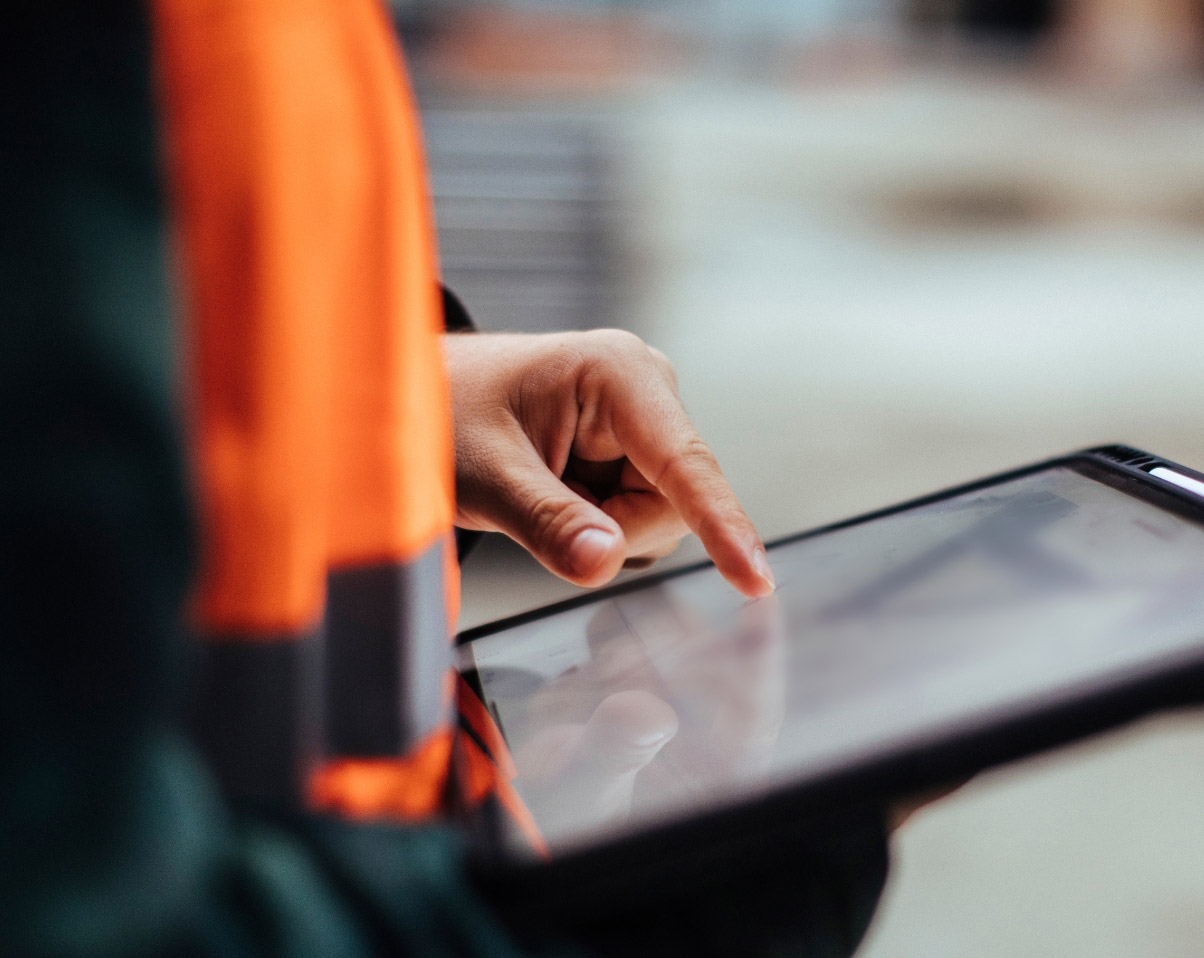
What Is the Difference Between Telematics and GPS?
While a GPS might tell you where a truck is, and for how long, telematics tells you what the truck is doing in that time and place.
Think of GPS as the "where and when" and telematics as the "who, what, why, and how."
Telematics supplies detailed information about what your fleet is doing over time by supplying you with vital performance metrics. GPS can tell you where a truck is on its route, but telematics can tell you whether the truck is parked and turned off, or idling while a driver is inside making a delivery.
Similarly, GPS can give you a good indication of how long a driver took to complete their route, whereas Telematics can help you optimize the route for next time.
GPS is an important piece of the telematics puzzle, and telematics requires GPS as a pivotal piece of the overall data sent back to the hub about a particular truck.
Without GPS, telematics would not be able to plot data with precision, leaving a large gap in knowledge and understanding of any particular truck and its driver.
As telematics applications have evolved over the past few years, so have their capabilities, allowing telematics to now be an easily integrated system with numerous applications. Some integrations include ELD, Dash Cams, and even Route Optimization.
Integrating a telematics system with various platforms can allow your fleet strategic advantages in efficiency and profitability. Additionally, fleet telematics helps with things like maintenance and fleet management, making telematics an appealing option for companies in need of a fleet management solution.

Should I Buy a Telematics Solution?
You might be wondering if you need telematics solutions for your growing fleet, and the short answer is yes.
The many benefits of telematics include productivity, safety, compliance, fleet optimization, and sustainability, all accessible through one singular Omnitracs telematics fleet management solution.
Telematics vehicle tracking not only gives you valuable information about your fleet and your drivers, but it also helps you save money long-term.
For example, a telematics vehicle tracking system can help you streamline and optimize driver routes through benchmarking. By applying past data to current results, you can reduce your overall fuel costs, minimizing your overhead and increasing your bottom line as a result.
Plus, valuable insights and real-time alerts given to your dispatch center allow you to coach drivers where needed, helping you reduce wear and tear on vehicles over time.
If a driver is prone to harsh braking or long periods of idling, a telematics solution will provide you with that data. Not only will this data provide you with an opportunity for coaching, but it will also help you take proactive steps to ensure that the truck receives maintenance sooner than it might otherwise would have.
Finally, a telematics solution helps your fleet in real time. With an Omnitracs telematics monitoring solution, you can set up alerts for individual trucks. Is a truck idling for too long? Send out a text message notifying the driver so they can adjust their strategy in the moment.
With Omnitracs telematics, your fleet is protected, and your drivers are better equipped to take appropriate action. If you’re looking for a way to improve performance, protect your investment, and enhance your bottom line, then adding telematics is an absolute must.
Pros and Cons of Telematics
Pros
Telematics is the ideal solution for fleet management. Not only does a telematics system help streamline and optimize performance, but it also saves your company money long term. Here are a few of the major benefits of installing a telematics system:
- Savings – A better bottom line is a strong motivator for any business and it's no secret that telematics is a great way to give your business a boost. In addition to helping cut costs on things like maintenance and fuel, adding telematics can help you key in on ways to serve a greater number of customers with things like route optimization. Save more money on costs, generate more new revenue, and do it all with telematics.
- Safety – Keeping your personnel and equipment safe is a top priority for every fleet. Aside from the headache and costs of insurance, accidents in the workplace hurt morale, cause disruption, and can potentially put your business out of commission altogether. Telematics systems help to keep your drivers, and their trucks, safe; ensuring your business keeps running smoothly.
Some additional advantages of adding telematics include:
- Visibility – Telematics lets you see every route, stop, and event.
- Accessibility – Telematics identifies cost trends from across your fleet.
- Coaching Opportunities – Telematics empowers drivers to change inefficient driving behaviors.
Cons
While telematics doesn't necessarily have any real cons to speak of, there are some potential drawbacks you will need to overcome. Here are a few of the most common objections to telematics, and some suggestions on how to overcome these objections should they arise:
- Driver Privacy – This is perhaps the biggest vocalized concern when it comes to telematics. There are plenty of drivers who wouldn't care whether or not they were being monitored, but there will always be those individuals who demand privacy to an extreme degree.
It is important to remind your drivers that telematics is only used during business hours to track and monitor vehicle and driver performance. Additionally, you can remind your drivers that any suggestions on how to optimize an individual's driving will always be done in a private coaching session.
- Data Processing – Fleet managers may be apprehensive about telematics at first due to the amount of informative data they will need to sort through. While this data may seem overwhelming, a good telematics system like Omnitracs will sort the data in seconds, leaving your fleet managers to apply the information on their time.
We like to think of it as more time and effort up-front, but way less time and effort long-term. Our telematics system is equipped with multiple views and settings that allow managers to quickly digest information, easily identify trends, and apply all of this newfound knowledge to how they manage their fleet.

Top Benefits of Telematics
The benefits of adding a telematics system far outweigh any potential problems that you may encounter. Here is a breakdown of some of the top benefits of adding telematics to your fleet.
- Productivity – Telematics provides real-time data and insights on various aspects of operations, such as vehicle location, driver behavior, fuel consumption, and maintenance needs.
- Safety – Telematics safety offers several benefits, including real-time monitoring of driving behavior, automatic crash notifications and emergency response, driver coaching, and targeted training, and vehicle maintenance to ensure vehicles are in optimal condition, reducing the risk of breakdowns or accidents caused by mechanical failures.
- Fleet Optimization – Telematics enables businesses to monitor and track their vehicles' location, route efficiency, and traffic conditions allowing businesses to better allocate resources based on real-time data. Telematics also maximizes operational efficiency resulting in time and fuel savings.
- Compliance – Organizations can leverage data collection, monitoring, reporting, and documentation to enhance their ability to achieve and maintain compliance with a variety of industry-specific regulations.
- Insurance Risk Assessment – Telematics enables insurers to move away from traditional rating factors in favor of a personalized, data-driven assessment. By leveraging real-time information about driver behavior, telematics helps insurers assess risk, manage claims, and reduce fraudulent activity.
- Integration – Telematics can be integrated with various other technologies and platforms like fleet management systems, navigation and routing applications, and vehicle diagnostics and maintenance systems, to enhance their functionality and provide additional value. Additionally, the flexibility of telematics integrations allows for customization and tailored solutions based on specific industry needs, operational requirements, and business goals.
- Sustainability – Telematics contributes to sustainability efforts by promoting fuel efficiency, eco-driving practices, and optimized routing, allowing fleets to use proactive maintenance and carbon footprint tracking to reduce their environmental impact, achieve sustainability goals, and align with global initiatives aimed at addressing climate change.
- Automated IFTA Reports – Automating IFTA reporting using telematics systems like Omnitracs allows fleet operators to improve accuracy and streamline processes during the reporting process to ensure compliance with fuel tax regulations across multiple jurisdictions.
What Vehicles Can Use Telematics?
Interested in learning what vehicles are able to leverage Telematics? Here’s a quick list of vehicles and industries that can easily add telematics for a substantially beneficial result:
Commercial Fleets
Trucks, delivery vans, buses, and taxis are all examples of commercial fleets where a telematics system could provide valuable insights into driver behavior, vehicle performance, and operational efficiency.
Construction Vehicles and Heavy Machinery
This type of equipment can use telematics to monitor usage, location, and maintenance needs. Telematics can help construction companies track equipment utilization, prevent theft, optimize maintenance schedules, and improve productivity for vehicles like excavators, bulldozers, and cranes.
Public Transportation
Telematics plays a crucial role in managing public transportation systems by helping to improve efficiency, reduce delays, and enhance the overall passenger experience. From buses and trains to trams and ferries, public transport vehicles can employ telematics as a way to enhance track schedules, optimize routes, and provide real-time information to passengers.
Rental and Car Sharing Services
Telematics technology is widely used in rental car and car-sharing services as it allows for remote vehicle tracking, keyless entry, usage monitoring, and billing. Telematics systems provide real-time data on vehicle availability, location, and condition, streamlining the rental and sharing process for both customers and service providers.
Agriculture and Farming Equipment
Telematics is increasingly being integrated into agricultural machinery, such as tractors, combines, and sprayers. These systems provide insights into equipment usage, performance, and maintenance needs. Farmers can optimize operations, track field activities, monitor fuel consumption, and remotely diagnose issues to ensure efficient and sustainable farming practices.
Marine and Aviation
Telematics technology can also be applied to marine vessels and aircraft. In the marine industry, telematics enables vessel tracking, fuel management, maintenance scheduling, and remote monitoring of systems. In aviation, telematics systems can collect data on flight performance, engine health, and fuel efficiency, and provide maintenance alerts.

Can Telematics Be Integrated?
While telematics is currently being used primarily in commercial vehicles, the potential integrations of telematics are one of the reasons telematics is such a fascinating subject. Not only does telematics provide data-driven analysis to enterprises as an opportunity to refine their methodologies, but it also provides greater connectivity within the global economy.
Telematics systems can be integrated with various other technologies and platforms to enhance their functionality and provide additional value. Here are just a few examples of telematics integrations:
Fleet Management Systems: We've kind of already covered this one, but just to recap, telematics systems can be integrated with fleet management software to provide a comprehensive solution for tracking and managing vehicles. This integration allows for real-time monitoring of both driver and truck, route and fuel optimization, and real-time alerts for maintenance and repairs, all within a centralized platform.
Navigation and Routing Applications: By combining GPS data from telematics systems with mapping and traffic data, drivers can receive accurate and up-to-date directions, avoid congestion, and reduce travel time. Pretty cool right!? When telematics data is integrated with navigation and routing applications dispatchers and fleet managers can monitor the progress of vehicles and provide real-time instructions or rerouting if needed.
Vehicle Diagnostics and Maintenance Systems: Monitoring vehicle health is one of the main benefits of telematics, but its integration with diagnostic and maintenance platforms is what allows technicians to diagnose a problem before it arises. It's almost like looking into the future, except it's real people taking timely action to prevent breakdowns and reduce downtime.
These are just a few examples of how telematics systems can be integrated with other technologies and platforms, but it's clear that the flexibility of telematics integration allows for a wide variety of tailored solutions based on operational needs.

History and Evolution of Telematics
While the history and evolution of telematics can be traced back several decades, starting with early developments in vehicle tracking and communication technologies, telematics as we know it really didn’t begin until the early 2000s.
The early 2000s marked a significant shift in telematics with the integration of wireless communication technologies. This allowed for real-time data transmission and remote communication between vehicles and centralized systems, which remains the basis of modern telematics systems.
With the introduction of cellular networks, mobile data connectivity, and more powerful computing devices, telematics expanded and the capabilities of telematics systems increased to a point that they could serve complex purposes like fleet management. Although telematics in its early forms of fleet management was impressive, it was still rudimentary compared to what it offers today.
Finally, the rise of the internet gave telematics a new wealth of resources like sensors, cameras, and other connected devices, enabling features like advanced driver assistance systems (ADAS), vehicle-to-vehicle (V2V) communication, remote control and monitoring, and integration with mobile apps.
Today, telematics is an integral part of various industries, including transportation, logistics, insurance, automotive, and fleet management. It continues to evolve with advancements in connectivity, computing power, data analytics, and emerging technologies and telematics plays a vital role in improving operational efficiency, safety, sustainability, and user experiences across a wide range of applications.
Many believe that the new rise of artificial intelligence will once more unlock the doors of telematics and further increase our ability to use the data-centric science of telematics as a way to increase productivity and connectivity in ways that were previously unimaginable.
Telematics Facts & FAQs
What is telematics?
Telematics refers to the technology that combines telecommunications and information processing as a way to transmit and receive data from remote locations. In the context of vehicles, telematics involves collecting and analyzing data related to vehicle performance, location, behavior, and other parameters.
How does telematics work?
Telematics systems typically consist of hardware devices installed in vehicles, such as GPS receivers, sensors, or communication modules. These devices collect data on various aspects of the vehicle and transmit it wirelessly to a central server or cloud-based platform. The data is then processed, analyzed, and made available for monitoring, reporting, and decision-making purposes.
What data can be collected with telematics?
Telematics can collect a wide range of data, including vehicle location, speed, acceleration, braking patterns, fuel consumption, engine diagnostics, maintenance needs, driver behavior, and more. The specific data collected depends on the telematics system and its capabilities.
Is telematics secure and private?
Yes, telematics systems prioritize data security and privacy. Data transmission is typically encrypted to ensure secure communication between the vehicle and the server. Additionally, telematics providers adhere to data protection regulations and implement measures to safeguard sensitive information.
Is telematics the same as GPS?
No, GPS is a satellite-based navigation system that provides location and positioning information, whereas telematics uses GPS technology in addition to other communication devices to enable comprehensive vehicle monitoring, communication, and analysis. In short, telematics and GPS are related, but not the same.
To learn how a Telematics solution can benefit your fleet, speak with a specialist at Omnitracs today.

